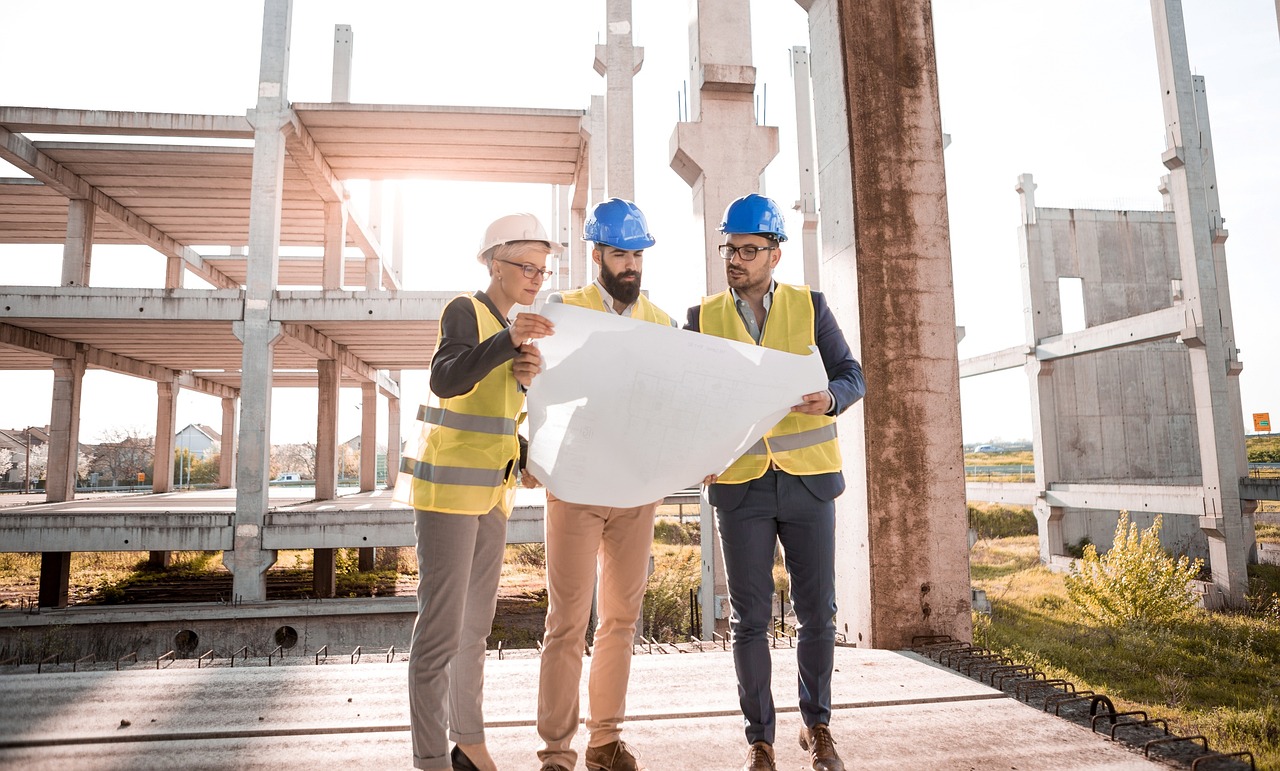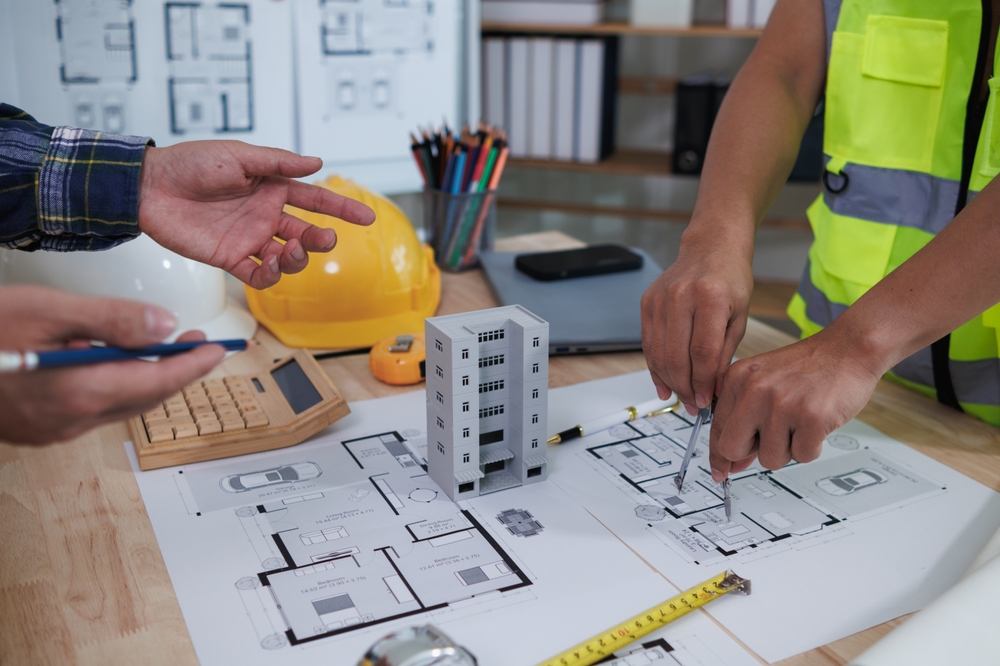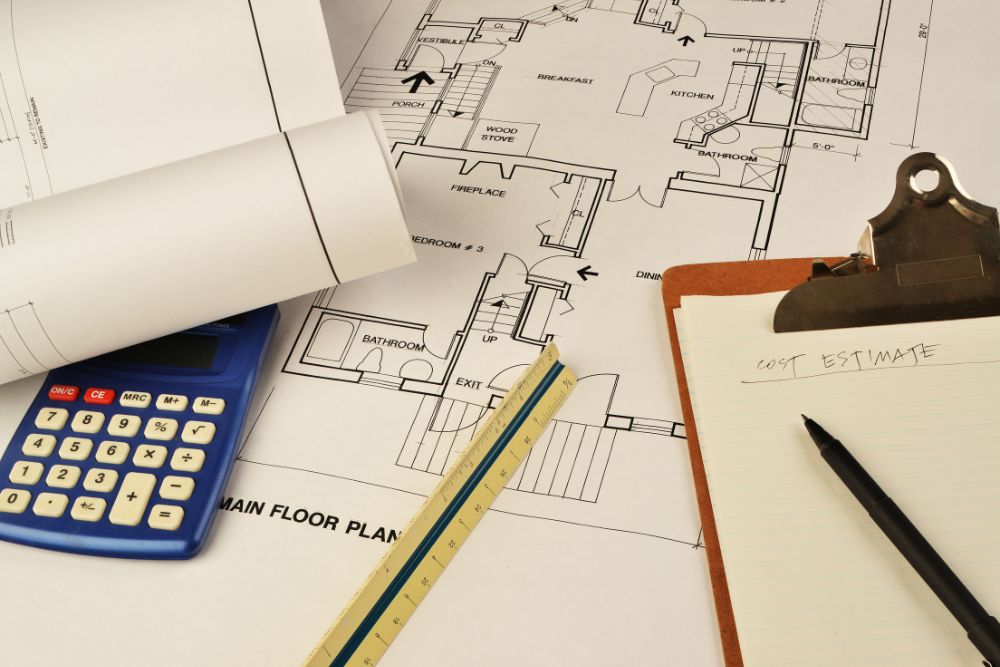The construction industry is growing fast, expected to reach over $22 billion by 2026. However, it’s slow to use new technology, which keeps productivity low. One of the most time-consuming tasks is cost estimation, often taking weeks or months. This delay costs contractors about $66,000 a year and makes it harder to win projects since they may seem less competitive or submit proposals late.
AI construction estimating software is helping to solve this problem. By speeding up the takeoff process, companies can work faster, focus on important tasks, and make more accurate estimates. This reduces costs and helps firms submit better proposals, leading to more profits.
In this blog, we will discuss the world of AI construction estimating, exploring its impact, benefits, and future implications for the United States construction sector.
What is AI Construction Estimating?
Construction estimating had been tiresome, boring, and more of a manual exercise than anything else. Estimators would sit with blueprints and crawl across different aspects, tallying and measuring to compile takeoffs. While thorough, this method was prone to human error and often resulted in inconsistencies across projects.
As technology progressed, AI Construction takeoff software emerged, allowing estimators to work with digital plans and automate some calculations. However, these tools still relied heavily on human input and interpretation.
Enter AI: The New Frontier in Construction Estimating
Artificial intelligence is now revolutionizing the estimating process, bringing exceptional levels of accuracy, speed, and insight to the table. AI construction takeoff and cost estimation tools are changing the game in several ways:
- Better Accuracy: New tools analyze lots of data to give precise cost estimates. They look at past projects, current rates, and other factors to avoid underestimating costs, which can lead to financial problems or missed opportunities.
- Faster Results: These tools can produce estimates much more quickly—sometimes in hours or minutes instead of days or weeks. This speed helps construction companies bid on more projects and respond faster to clients.
- Predicting Issues: The technology doesn’t just calculate costs; it also predicts potential problems. By studying past projects, it can foresee challenges, spot risks, and suggest ways to handle them, which is key for effective planning and risk management.
- Learning and Improving: Unlike old software, these tools get better over time. As they handle more projects, they learn and become more accurate and useful.
- Handling Complex Details: Construction projects involve many factors, like material costs, labor rates, weather, and regulations. These tools can manage all these details to provide more thorough estimates.
Implementation of AI in Construction Estimating
The benefits of AI in construction estimating are significant, but adopting these systems involves careful planning. Here are some essential steps for construction companies:

- Data Management: Organize and integrate project data, supplier information, and market trends. Create a structured system for collecting and storing this information.
- Training and Transformation: Implementing AI requires training for estimators and other team members. Thus, it is crucial to revise one’s perceptions about the role of Artificial Intelligence in people’s lives and stop perceiving it as the opposite of human labor. Field estimators will also be required to know how to interface with AI results and apply their own estimative experience.
- Customization: Each construction company has unique needs. AI systems should focus on these specific requirements, considering factors like the types of projects, geographic focus, and client preferences.
- Gradual Rollout: Start with pilot projects to test and refine processes before full implementation.
- Ongoing Evaluation: Regularly compare estimates to actual project outcomes. Make adjustments to improve accuracy over time.
The Impact of AI on the Construction Industry
The adoption of AI in construction estimating is having far-reaching effects on the industry as a whole:
- Fewer Injuries: Construction is a dangerous field. Advanced robots can handle risky tasks like lifting heavy items and working in dangerous places, making worksites safer.
- Better Building Designs: Modern tools help create detailed 3D models of buildings, including all systems like plumbing and electrical. These tools can spot and fix design problems early, saving time and reducing mistakes.
- More Efficiency and Productivity: Technology speeds up tasks like creating takeoffs and estimates, which used to take weeks or months. Now, these tasks can be done in seconds with high accuracy, allowing for faster proposals and fewer errors. During construction, technology can also boost productivity by up to 50% by tracking workers and equipment in real time.
- Preventing Cost Overruns: Mistakes in cost estimates often lead to budget problems. New technology automates the estimating process, reducing errors and helping avoid unexpected costs, which benefits everyone involved in the project.
- Streamlining Repetitive Tasks: Technology handles repetitive tasks like cost estimations quickly and accurately without getting tired. This frees up human workers to focus on more important tasks.
AI-Powered Estimating Software: Making Construction Easier
Cost estimating is one of the most important yet challenging aspects of construction. In the past, it could have taken weeks or even months, and the process was also very expensive. However, the use of AI estimating software is slowly eradicating those challenges in a bid to offer estimates efficiently and effectively.
Here’s how AI-powered estimating software compares to traditional and digital methods:
- Manual Takeoffs: Working without support tools and automated takeoffs are the traditional ways. These are time-consuming, often inaccurate, and require a great deal of effort. Some of them may take several weeks or even months to complete.
- Digital Takeoffs: Automated methods using digital software are more effective than manual ones, but they remain quite time and labor-consuming. The estimators might take approximately 90 minutes to preview a given page, and many of the tools need a lot of tweaking.
- AI-Powered Takeoffs: With the help of artificial intelligence, any kind of takeoff may range from three to ten seconds. This would mean a lot of time savings, approximately 90 minutes per sheet. It also has a 97% accuracy, leaving less room for error and reducing additional expenses. The greater the employment of the knowledge in the artificial intelligence program, the better and quicker it is.
Benefits of AI Construction Estimating for Everyone Involved

AI construction estimating brings many advantages for contractors, project managers, and clients:
For Contractors:
- Better Bids: Advanced estimating resources enable the contractors to prepare accurate and credible estimates that will allow them to succeed in the bidding processes.
- Efficient Resource Use: These tools enable the contractors to optimize resource utilization by providing them with accurate cost and time estimates, leading to more gain by avoiding wastage.
For Project Managers:
- On-Time and On-Budget Projects: Both basic and advanced estimating tools offer timely data and reliable forecasts that assist the project managers in maintaining the projects and ensuring that they are done as planned or required.
- Improved Teamwork: It helps to make estimates as precise as possible so that all participants can understand each other and achieve planned targets.
For Clients:
- Clear Costs: Modern estimations are accurate and based solely on facts; thus, clients are confident that they get realistic cost estimates for the project.
- Stay Informed: This helps the client obtain live cost data for the project and eliminate fixtures that may surprise them later.
Future Implications of AI in Construction Estimating
As AI technology advances, it will bring even more changes to construction estimating:
- Better Predictions:
AI will improve its ability to predict future issues by analyzing past data more accurately. This means fewer surprises and better planning for cost overruns or delays.
- Real-Time Updates:
AI will use real-time data from sensors and devices on-site to update estimates instantly. This will keep estimates accurate and reflect current project conditions.
- Smarter Algorithms:
AI systems will learn from each project to improve their estimates over time. More data will lead to better predictions and fewer errors.
- Improved Collaboration:
AI will also improve the team’s communication systems, as contractors, managers, and clients will be able to instantly share cost estimates and progress reports.
Conclusion
With the new development of AI in construction, estimating has been made accurate, faster, and efficient. It eliminates the need for repetitive work and helps construction companies build better estimates and reduce costs, lowering their rates to be competitive in the industry. With the development of AI techniques and technologies, AI will be able to bring more value, such as safer environments in the workplace, better designs, and enhanced productivity. To construction professionals, AI is not simply for satisfying trends; it is for future success. This means that with the appropriate kind of instrumentality and mindset, then AI will only result in an improvement in project management.
FAQs
Can AI estimate a construction project?
Yes, AI can quickly generate detailed and accurate project estimates. This automation saves time and effort, allowing professionals to focus on more complex tasks.
How can AI be used in construction?
AI can analyze data from building systems to improve energy efficiency and indoor air quality. It helps design better buildings by identifying areas that could waste energy.
Can AI do construction takeoffs?
Yes, AI can automate the takeoff process. For example, Beam AI software uses advanced technology to measure and count materials from project plans.
What are the limitations of AI in construction?
AI integration can be complex and costly to start. The high initial costs might be a barrier for some companies despite the long-term benefits.
Can AI create construction drawings?
AI can help create and manage construction drawings with high precision, reducing the risk of costly mistakes and delays.











